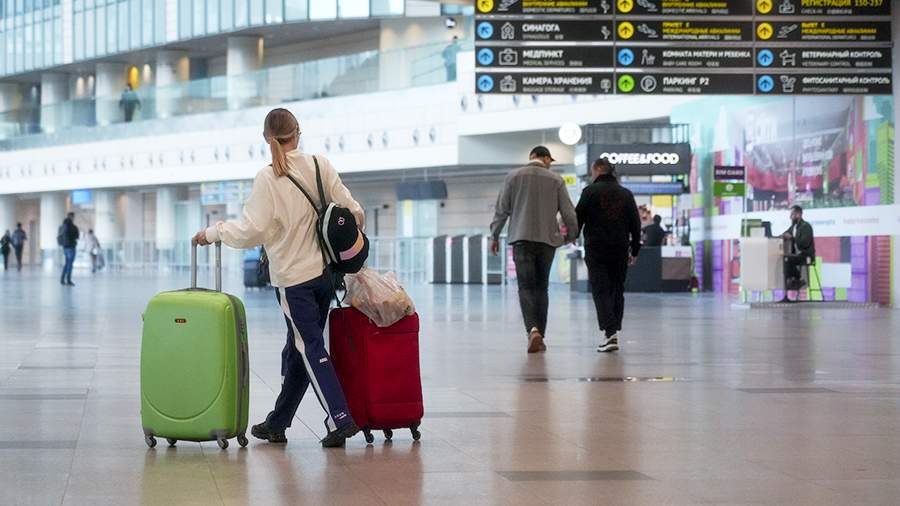It started for many Dutch people with Wehkamp. The sweaters, sports shoes and mattresses that they could find in the huge catalog of the then mail-order company were delivered to their door by post from the warehouses in the villages of Maurik and Dedemsvaart. Wehkamp also launched an online store in 1995, not long after young Jeff Bezos started his Amazon company across the Atlantic.
Twenty-five years later, the number of home-delivered packages is rising so fast that there are worldwide paper shortages. In the Netherlands alone, there are already hundreds of millions: in 2020, the Netherlands Authority for Consumers and Markets counted a record number of 524.5 million parcels delivered. Online sellers such as Amazon, Bol.com and Zalando do not have physical stores, but only warehouses, which are growing in size and number. In order to run this flow of goods efficiently, a rapidly growing network of distribution centers has been created. The result: the ‘dozing’ of the Netherlands.
‘Verdozing’ – the word stands for everything that is bad about a distribution hall. An aesthetic beauty cannot be called a windowless warehouse fourteen meters high and two hundred meters long. The arrival of a mega box of blocks of 40,000 square meters is causing increasing traffic on the supply roads and is often at the expense of nature in the area. And the fact that they are rising on the hectares where cows once stood and where there will therefore be no houses, does not make the boxes popular either. This autumn, local residents demonstrated against announced building plans in Maastricht, Geldrop and Tilburg, among others. An environmental action group glued the locks of eighteen Albert Heijn stores in Amsterdam in September, out of anger about a planned distribution center in the Lutkemeerpolder.
Will there be fewer halls because of all that resistance? Not quite. Research agency Stec Groep calculated that the stock of square meters used for these types of centers has grown to more than 39 million since 2010 in 2020 – an increase of 50 percent. According to the researchers, if the current trend continues, the Netherlands will have approximately 59 million square meters of logistics halls by 2030, which makes up the land area of Ameland. Critics fear that the impetuous growth will degenerate into sprawl. What must be done to ensure that the Netherlands does not become one large freight corridor in the future?
Miracle of technology
Users have very different feelings about their distribution center. For these companies and transport operators, they are a marvel of technology. Behind the windowless walls of a ‘DC’ hides a complex world of conveyor belts and sorting robots, which allow the gigantic amount of goods to run smoothly – and the consumer delivers his package on time. The transport sector, in 2019 still good for 4.3 percent of the gross domestic product (GDP), can no longer do without.
One hall is not the other. For example, there are warehouses for the supply of shops and there are centers for storage and transhipment of items destined for abroad. And of course there are the large sorting and transit halls of postal and parcel deliverers. Larger sorting centers can process up to half a million packages per day.
There is also great enthusiasm among real estate investors about distribution halls. Where shops and hotels had to close during the lockdown, the distribution companies were busier than ever. When it turned out that online retail companies continued to meet their rental obligations, the demand for new business space exploded at the end of 2020. Asset managers shifted their strategy and are fully committed to distribution real estate, with the result that, according to real estate advisor CBRE, a record amount of 5.1 billion euros was invested in 2021 – more than a billion more than in residential construction. The contracts, which are usually for ten years, ensure a stable return. It was also a party for project developers: financing a hall is no problem, and the tenants often arrive before the hall itself.
The first major wave of construction began in the early 1990s. Due to its favorable location along the main distribution corridor of Western Europe, many companies established their European distribution headquarters in the southern provinces. This corridor was called the ‘blue banana’ by French geographers – blue because of the color they gave it on the map, and banana because of its shape. The corridor runs from the English Midlands via the Benelux to Northern Italy. Important stops include Liverpool, Rotterdam, Frankfurt, Zurich and Milan – the axis forms the most affluent urban area in Western Europe.
Multinationals such as Boston Scientific (Kerkrade), clothing brand Forever 21 (Bergen op Zoom), shoe brand Crocs (Dordrecht) and PVH – parent company of brands such as Tommy Hilfiger and Calvin Klein – (Venlo and Roosendaal) have established their European warehouses in the Netherlands below the large rivers. Samsung and Canon distribute their stocks across Western Europe via Delft and Rotterdam respectively.
Retail Challenge
Since 2014, a new type of distribution hall has outperformed all others in terms of growth: the warehouses of companies that serve the consumer directly. Due to the great popularity of online ordering, warehouses and sorting centers of parcel deliverers such as DHL and PostNL and retailers such as Coolblue and Bol.com are appearing throughout the Netherlands. Regional distribution centers arise on the edges of urban areas and on conveniently located highways, where the large flow of parcels branches for the last part (‘the last mile) via smaller delivery vans or electric bicycles.
The Netherlands is after the UK second on the list of countries where online shopping is the most popular, according to lobby group Ecommerce Europe. More than nine in ten of all consumers sometimes order something from an online store. Especially during the corona pandemic and the lockdowns, the Dutch bought en masse from the online stores – 30 percent more parcels were delivered in 2020 than a year earlier. Online retail was doing exceptionally well. According to the CBS, turnover increased by 43.5%.
Ordering online is therefore not made difficult for consumers. Delivery is usually free for the customer, and is also fast. This is partly due to large online stores such as Amazon, which dictate the market with their 24-hour delivery.
The smaller online retailers face a challenge. They must deliver a growing number of products in that time frame, to more customers than ever before. Postal and parcel deliverers are putting employees under growing pressure for the higher targets to get.
In order to keep up with the online competition, online stores are also expanding their ranges. In order to have everything in stock in the right color or size, not only more, but also larger warehouses are needed. According to Stec Groep, the average surface area of warehouses in 2010 was still 6,900 square meters, now it is 9,800. The XXL hall has been on the rise in recent years, with surfaces up to more than 50,000 square meters. Outliers are the Zalando distribution center in Bleiswijk (140,000 square meters) and the enormous distribution center that the German real estate investor Patrizia is having built on the Tweede Maasvlakte (210,000 square meters) – more than 6.5 times the De Kuip football stadium.
The rise of logistics real estate will continue for the time being, but how strong, that remains dependent on our own ordering behaviour
For cost reasons, the choice often falls on building on vacant land, instead of redeveloping existing industrial sites. With the impact of numbness on the landscape and the speed at which it takes place, the call for intervention is growing. The Board of Government Advisors, which advises the national government on spatial issues, argues for more guidance from national politics. The government, which has decentralized spatial planning issues since 2012, has had little control over the construction of large logistics real estate in recent years.
Walls with a painting
Municipalities, which have been under financial pressure for years, are being persuaded with high land prices and the prospect of economic activity. With future minister Hugo de Jonge for Housing and Spatial Planning (CDA), the cabinet has the opportunity to regain some control over spatial planning. Even better, according to the Board: mutual consultation about distribution halls as regions – so that municipalities are not played off against each other. More long-term thinking, for example by ‘clustering’ the halls along highways, could also help.
The retailers also benefit from such consultation. After all, if no alderman agrees to the construction of their halls, they will not be able to sustain their growth. It can also pay off to use the distribution centers in a smarter way, and to have them also contribute to society. The roofs of many warehouses, sometimes several hectares, are already covered with solar panels, with which they generate their own electricity and sometimes even return excess power to the electricity network.
And does the hall really have to be that ugly from the outside? More than before, investors are also making increasingly higher demands on the quality of the centers – both for the working environment inside and the appearance on the outside. No more gray ‘plinths’, but walls with a painting or color.
Yet the consumer remains the true driver of the numbness. The rise of logistics real estate will continue for the time being, but how strong will depend on our own ordering behaviour. After all, a package that is delivered to home via an online store goes through many more links than a product that is delivered to stores in larger quantities. Anyone who is annoyed by the halls should therefore start with themselves. Does grocery shopping really need to be done online? Why not go to the shoe store for that pair of Nikes, or to the bookstore for that bestselling novel? Any product that we do not order online does not go through the logistics delivery chain and does not require a place in a distribution center. Just as food is not made in the supermarket, a package is not made in a DHL delivery car.
A version of this article also appeared in NRC Handelsblad on 8 January 2022
A version of this article also appeared in NRC on the morning of January 8, 2022
#annoyed #drowsing #Netherlands #start






